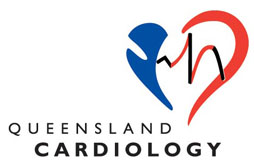Coronary Angiogram
Where is the aortic valve?
This procedure is performed to show any narrowing or blockage of your coronary arteries.
How is it done?
The procedure begins with an injection of local anaesthetic, a fine tube (catheter) is put into the artery in the groin or arm. The tube is then passed into each coronary artery. A series of pictures are taken using X-Rays and a contrast medium (X-Ray dye).
Contrast medium is also injected into the main pumping chamber of the heart (left ventricle). This is used to measure the size of the heart and how well it is pumping.
You may have an Intravascular Ultrasound (IVUS) which uses soundwaves to produce an image of the coronary arteries to see their condition. This is done whilst the catheter is in the artery.
At the end of the angiogram, the puncture in the artery in the groin or arm may be closed with a special plug to stop the bleeding.
After the angiogram has been completed, if significant coronary artery disease is found your doctor will then discuss with you which treatment my be best for you. This may be a procedure called an Angioplasty (the arteries are widened using a small sausage-shaped balloon) or an operation such as a Coronary Artery Bypass Graft. Sometimes medications alone may be the best treatment option.
How do I prepare?




After the procedure





What are the risks?
In recommending this procedure, your doctor has balanced the benefits and risks of the procedure against the benefits and risks of not proceeding. Your doctor believes there is a net benefit to you going ahead. This is a very complicated assessment.
Common risks (more than 5%) include –
- minor bruising at the puncture site
- loss of pulse in the arm after a radial artery (arm) procedure
- major bruising or swelling at the groin/arm puncture site
Rare risks (less than 1%) include –
- abnormal heart rhythm that continues for a long time. this may need an electric shock to correct.
- surgical repair of the groin/arm puncture site or blood vessel
- minor reaction to the X-Ray dye such as hives
- loss of kidney function due to the side effects of the X-Ray dye
- stroke. This can cause long term disability.
- heart attack
- an allergic reaction to the X-Ray dye
- need for emergency heart surgery or angioplasty
- a higher lifetime risk from X-Ray exposure
- death as a result of this procedure is very rare
If you have any further questions, please contact us at:
Queensland Cardiology
St Vincent’s Private Hospital Northside
North Medical Suites, Green Lifts Level 3,
627 Rode Road
Chermside Q 4032
(07) 3861 5522

